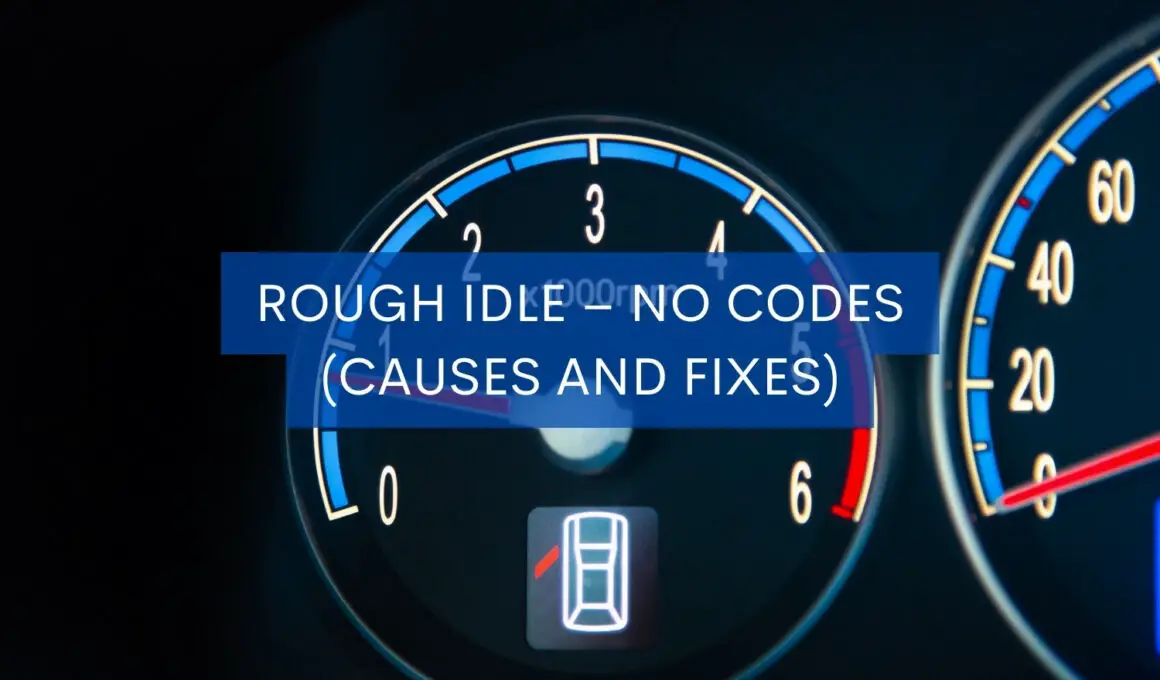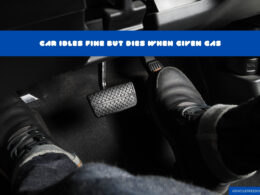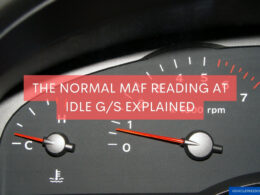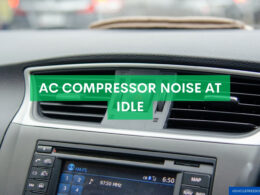In This Article Show
Rough idling is one of the common problems faced by car owners. This problem can be particularly exasperating when no error codes offer guidance. However, by understanding the underlying causes, you can maintain your composure and resolve the issue.
A rough idle without any codes could be caused by various factors, such as vacuum leaks, a dirty throttle body, a malfunctioning idle air control valve, clogged fuel injectors, clogged air filters, poor quality fuel, or even a blown fuse.
Further, this article will explore various reasons behind car misfires at idle and provide step-by-step solutions to resolve the issue.
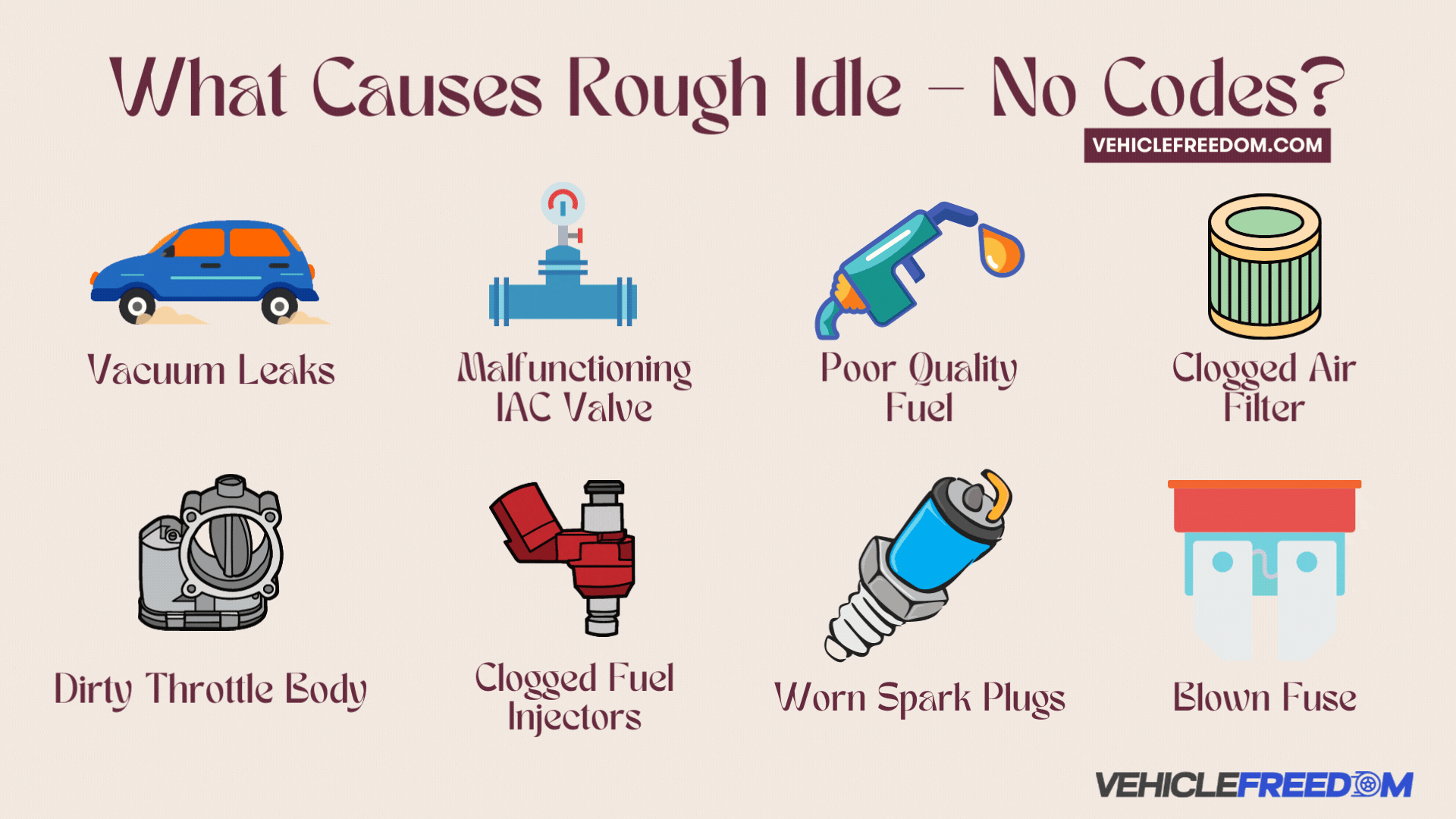
8 Reasons Why an Engine May Idle Roughly without Codes [Causes and Fixes]
Idling refers to a condition where the engine operates at its lowest RPM while maintaining its essential functions. This occurs when the vehicle is stationary, such as waiting at a traffic signal or warming up the engine before driving.
When the engine side components or sensors malfunction, it idles roughly, producing vibrations and noise. Sometimes, the check engine light turns, or you see error messages with a scan tool.
However, there are instances when idling isn’t accompanied by any error message.
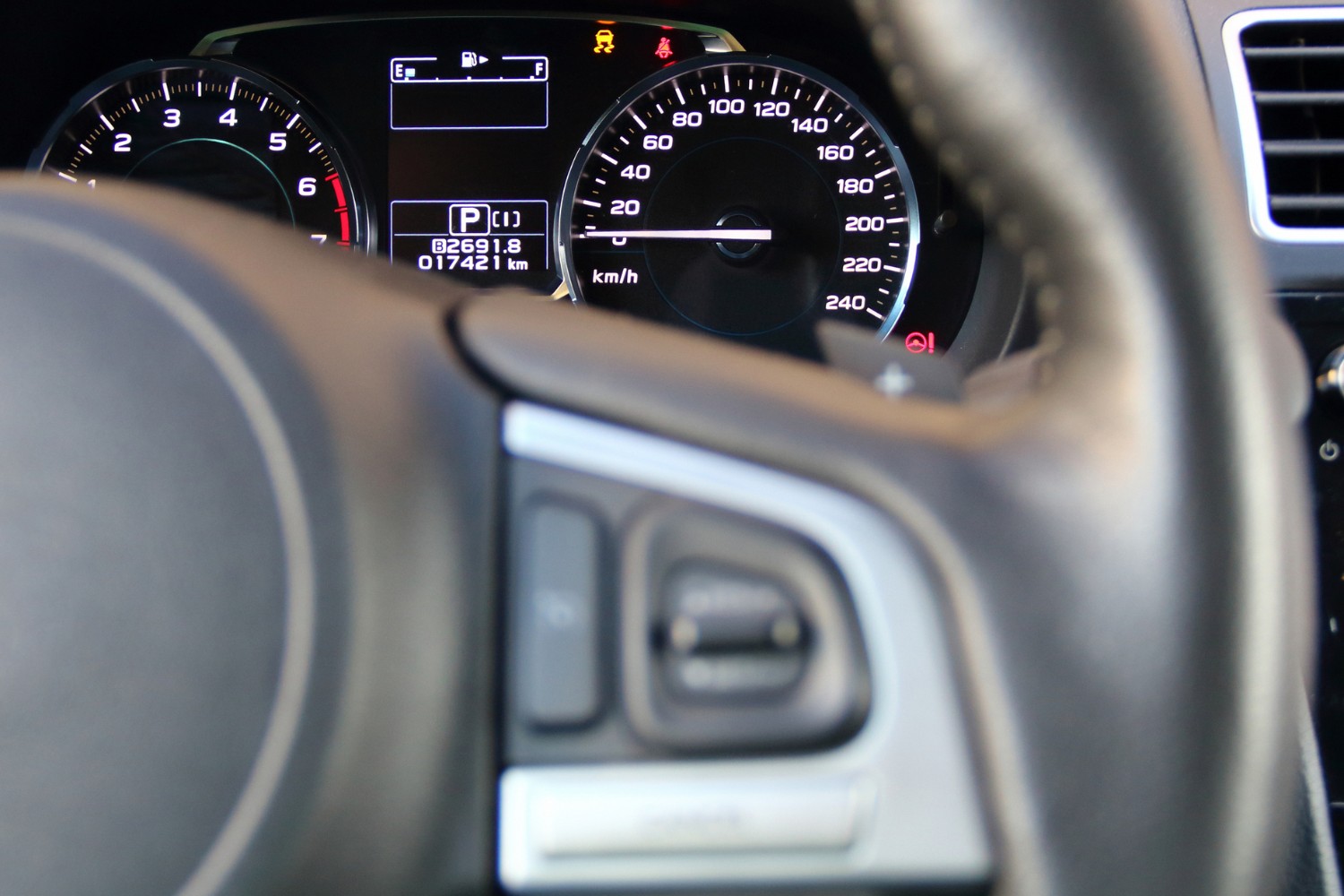
Here’s a list of some issues which may cause that to that happen:
1. Vacuum Leaks
The intake manifold is responsible for delivering a mixture of air and fuel to the engine’s cylinders. Its vacuum pressure is essential for adequately functioning various engine components and maintaining the right air-fuel ratio.
When there’s a vacuum leak, the engine receives more air than needed, resulting in an imbalance in the air-fuel mixture, which in turn causes a rough idle.
Things are fine at higher RPMs when there’s a vacuum leak, but the idling is pretty. Since vacuum leaks do not always trigger trouble codes, it can be challenging to identify them as the root cause.
How to Fix Vaccum Leaks?
Visually inspect all vacuum hoses and connections for damage. You can use a vacuum gauge to measure the vacuum pressure in the intake manifold. A lower-than-normal reading (18-22 in of Hg.) could indicate a vacuum leak.
Once you’ve located the leak, replace the damaged hoses or gaskets to restore the proper air-fuel mixture.
2. Dirty Throttle Body
The throttle body is a component of the air intake system that controls the air entering the engine. It consists of a butterfly valve opening and closing as the accelerator pedal is pressed or released.
Over time, carbon deposits can build up in the throttle body, disrupting the smooth flow of air into the engine. This can lead to a rough idle as the engine struggles to maintain a stable air-fuel mixture.
How to fix a dirty throttle body?
Locate the throttle body under your engine hood. It’s likely under the intake manifold. Take apart the screws, and expose its interior.
Use throttle body cleaner and a brush to remove the carbon deposits. This will ensure the butterfly valve can move freely, allowing the proper airflow into the engine.

3. Malfunctioning Idle Air Control (IAC) Valve
The idle air control valve is responsible for maintaining the engine idle speed by regulating the amount of air entering the engine. It is an electronically controlled valve that bypasses the throttle body and allows air to flow directly into the engine when the accelerator pedal is not pressed.
If the IAC valve is dirty or faulty, it may not be able to maintain the proper idle speed, resulting in a rough idle. In some cases, it does display codes but mostly doesn’t.
How to address a malfunctioning IAC valve?
- Find the IAC valve on your engine right next to the throttle body.
- Detach all battery cables connected to it. Remember to turn off the car before doing so.
- Remove dirt, carbon deposits, or other debris that could interfere with the valve’s function with a fine cloth.
- Inspect the valve for damage or wear. If it’s damaged, replace it with a new one.
4. Clogged Fuel Injectors
Fuel injectors are the main combustion components. They deliver a precise amount of fuel into the engine’s combustion chamber, maintaining the stoichiometric A/F ratio.
Over time, they can become clogged with debris which can disrupt the proper flow of fuel into the engine. This can lead to a lean air-fuel mixture and cause a rough idle as the engine struggles to maintain the optimal balance of air and fuel.
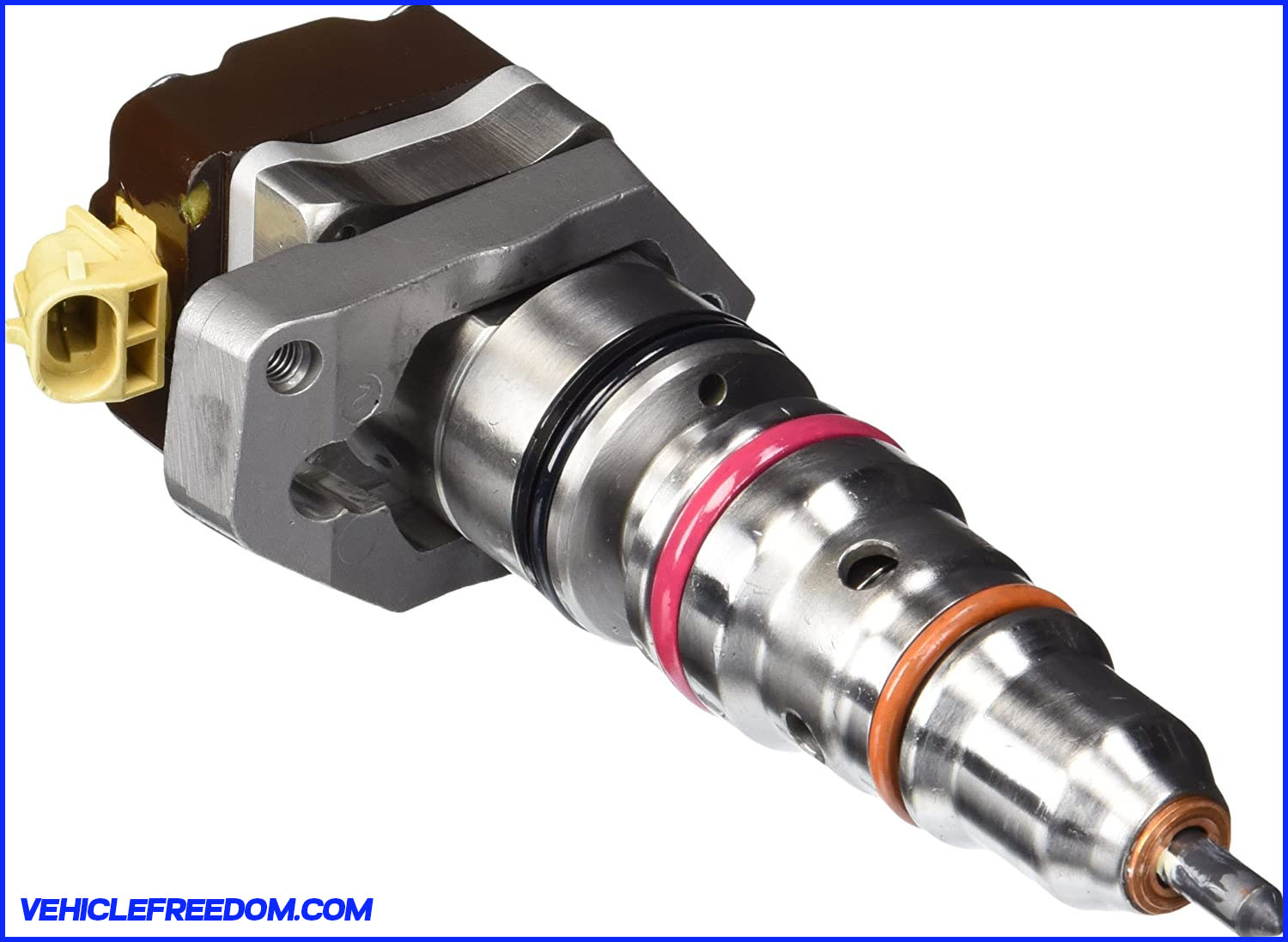
How do I clean clogged fuel injectors?
- Remove the fuel injectors. This task is complex since the injectors’ positions vary from vehicle to vehicle. Secondly, it is attached to some auxiliary components. So, you can consult a professional or watch a DIY video for removal.
- Clean them manually with a fuel injector cleaning kit. This involves using a pressurized solvent to flush out debris and deposits.
- If the injectors are severely clogged or damaged, replace them with new ones to ensure optimal fuel delivery to the engine.
5. Poor Quality Fuel
At times, a change in fuel quality can result in rough idling. A low-quality fuel may not burn efficiently, leading to a rough idle.
This can be particularly true for vehicles that require premium fuel. Poor quality fuel can contain contaminants and cause various engine issues, including a rough idle, without triggering codes.
How to resolve issues caused by poor-quality fuel?
You need to make sure that you’re using the right grade recommended by your vehicle’s manufacturer to ensure optimal performance and prevent engine damage.
Secondly, only fill up your vehicle with fuel from reputable gas stations to minimize the chances of getting low-quality fuel.
6. Worn or Fouled Spark Plugs
Spark plugs ignite the air-fuel mixture in the engine’s combustion chamber. When they are worn or fouled, they can cause incomplete combustion, leading to a rough idle.
Although this issue can sometimes trigger a misfire code, it’s not always the case.
How to Inspect and replace your spark plugs?
- First, disconnect the battery and make sure the engine’s cold.
- Remove the spark plug wires or coil packs from the spark plugs.
- Use a spark plug socket to remove the spark plugs.
- Inspect the plug, and look for potential problems based on the Champions auto chart. Replace it if it’s burnt.
- Reinstall the spark plug wires or coil packs.

7. Clogged Air Filter
A clogged air filter restricts the amount of air entering the engine, leading to an imbalanced air-fuel mixture. This can cause a misfire at idle as the engine struggles to maintain the proper combustion process.
How to clean a clogged air filter?
- Locate the air filter in your engine bay, typically housed within an air filter box.
- Remove the air filter and inspect it for excessive dirt or debris.
- If the air filter is dirty or clogged, replace it with a new one to ensure optimal airflow into the engine.
- Reinstall the air filter and test the engine idle.
The air filter needs to be replaced regularly with an oil change.
8. Blown Fuse
Sometimes the OBD scanner fails to trace error codes due to a blown a fuse within the electrical system. Any error codes that the engine control unit may have identified otherwise go unnoticed due to lack of connectivity with the scanner.
How to identify and replace a blown fuse?
- Get to your vehicle’s fuse box.
- Consult your owner’s manual or the fuse box cover for a diagram identifying the fuse associated with the ignition or fuel injection system.
- Remove the indicated fuse and visually inspect it. A blown fuse will have a broken metal strip inside the plastic casing.
- Please replace it.
Frequently Asked Questions
What are the main causes of a rough idle even with no codes?
Some of the main causes of a rough idle even with no codes can be due to poor fuel delivery, vacuum leaks, ignition system faults, or problems with the vehicle’s idle air control. Issues with the spark plugs, fuel injectors, or an irregularity in the air-fuel mixture can also lead to this issue. It’s critical to identify and fix the root cause promptly to prevent further complications.
What are the potential fixes for a car running rough at idle but showing no error codes?
Fixing a car that’s running rough at idle with no error codes can involve several steps depending on the cause. This could include cleaning or replacing the fuel injectors, changing the spark plugs, checking and fixing vacuum leaks, or rectifying faults in the ignition system. Regular maintenance and timely service of your vehicle can also prevent such issues.
How can a vacuum leak cause a rough idle?
A vacuum leak can lead to a rough idle by causing an imbalance in the air-fuel mixture. This imbalance happens because the leak allows extra air into the combustion chamber, making the mixture too lean. The engine then compensates by adding more fuel, leading to inefficient combustion and a rough idle.
Why is my vehicle’s idle air control causing rough idling with no codes?
The idle air control (IAC) valve is responsible for managing the engine’s idle speed. If the IAC valve is dirty or faulty, it might not provide the proper amount of air into the engine while idling. This irregularity can cause a rough idle, even without triggering any diagnostic trouble codes. Cleaning or replacing the IAC valve usually resolves this problem.
Final Thoughts
A rough idle with no trouble codes can be challenging to diagnose and fix. However, by systematically checking the possible causes mentioned in this article, you can identify and address the issue to restore your vehicle’s smooth idle.
Understanding the function of each component involved in these causes can help you better identify the root of the problem.
Remember to consult a professional mechanic if you’re unsure or uncomfortable performing any of these fixes.






